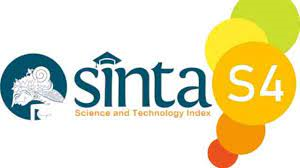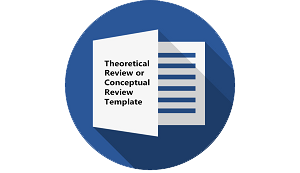Identifying and Understanding the Language Curriculum Across the World
DOI:
https://doi.org/10.30957/ijoltl.v7i2.706Keywords:
Language Curriculum, Literature Curriculum,Abstract
This article compares and contrasts the Language Curriculum in the United States, United Arab Emirates, Mongolia, Philippines and Indian Language Curriculum for the year 2022. This is a comparative analysis; a research journal conducted to analyze the ideological, cultural, and political-economic elements that impact the development of language curricula in five different countries. Furthermore, the educational goals and ideologies that underpin both curricula are discussed. A very intriguing conclusion emerges when considering the curricula's unspoken aims. All the five (5) nations' language and literature curricula emphasize the significance of citizenship and character education and are interwoven into curricula instruction.
Meanwhile, the US language curriculum prioritizes creating American identity, with a focus on improving learning for the professional workforce and career-ready persons, which will help the global economy in the future. Meanwhile, moral and religious training is prioritized in the United Arab Emirates, Mongolia, Philippines and Indian language curriculum. Language education or curriculum are intertwined in nation-building. After examining, comparing, and contrasting both curricula, the author discovered that the US successfully instills character education to mold the worldview and characteristics of its population derived from their clear ideology, whereas the United Arab Emirates, Mongolia, Philippines and India are rather unexplained and ambiguous. As a result, this article demonstrates that there is an opportunity for development for educators and educational leaders in the United Arab Emirates, Mongolia, Philippines and India to be more explicit in determining which character is best exposed in the language curriculum.
Downloads
References
Abu Dhabi Education Council. (2010). New school model: School leadership handbook. Retrieved from www.adec.ac.ae/.../Publications/ADEC-Leadership%20english.pdf Abu Dhabi Education Council. (2011). English continuous assessment. Retrieved from alandalus-sch.com/documents/ADEC-ECART.pdf
Al Farra, S. (2011) ‘Education in the UAE: A vision for the future’, in ECSSR (ed.) Education in the UAE: Current status and future developments. Abu Dhabi: The Emirates Centre for Strategic Studies and Research, pp. 219-238.
Axel, J. (2014). Filipino in the United States: Heritage Language Perspectives. In T. Wiley, J. K. Peyton, D. Christian (Eds.), Handbook of heritage, community, and native American languages in the United States: Research, policy, and educational practice (pp. 297-307). New York: Routledge.
Benson, C. (2010). The Primary Bilingual Education Experiment in Mozambique, 1993 to 1997. International Journal of Bilingual Education and Bilingualism. Retrieved from http://www.lingref.com/isb/4/019ISB4.PDF
Calderon, M. (2014). A critique of K-12 Philippine education system. International Journal of Education and Research, 2, 541–550.
California Department of Education. (2017). English language arts content standards for California public school. California: The California Department of Education. Retrieved from http://www.cde.ca.gov/be/st/ss/documents/elacontentstnds.pdf
Carless, D. (1998). A case study of curriculum implementation in Hong Kong. System, 26, 353–368. doi:10.1016/s0346- 251x(98)00023-2
Chun, C. (2016). Addressing racialized multicultural discourses in an EAP textbook: Working toward a critical pedagogies approach. TESOL Quarterly, doi:10.1002/tesq.216
Chun, D., Kern, R., & Smith, B. (2016). Technology in language use, language teaching, and language learning. The Modern Language Journal, 100, 64–80. doi:10.1111/modl.12302
Common Core State Standards Initiative. (2017). Common core state standards for English language arts & Literacy in history/social studies, science, and technical subjects. Washington, DC: National Governors Association Center for Best Practices & Council of Chief State School Officers. Retrieved from http://www.corestandards.org/wpcontent/uploads/ELA_Standards1.pdf
Cummins, J. (2010). Language, power, and pedagogy. Bilingual children in the crossfire. Clevedon, England: Multilingual Matters.
Department of Education. (2012). Policy guidelines on the implementation of grades 1 to 10 of the K to 12 basic education curriculum (BEC) effective school year 2012–2013. Retrieved from http://www.deped.gov.ph/ sites/default/files/order/2012/DO_s2012_31.pdf
Department of Education. (2013). NAT overview and 2012 test results. Retrieved from http://depedqc. ph/announcements/2013-NAT-GUIDELINES/2013%20NAT%20Overview%20-%20QC.pdf
Department of Education. (2015). Utilization of language mapping data for mother tongue-based multilingual education (MTB-MLE) program implementation. Retrieved from http://www.deped.gov.ph/sites/default/files/ order/2015/DO_s2015_55_0.pdf
Department of Education. (2016). K to 12 curriculum guide for English. Retrieved from http://www. deped.gov.ph/sites/default/files/page/2016/English%20CG_0.pdf
Djite, P. H. (2018). The Language Differences: Language and Development in the Greater Mekong Sub-Region. Canada: Multilingual Matters
Durano, F. (2008). Attitudes towards English and Filipino codes-witching amongst high school students in Ormoc City, Philippines (Unpublished master’s thesis). Sweden: Malmo University.
ECSSR. (2011) ‘Development of the Curriculum in the UAE’. Available at: http://www.ecssr.ac.ae/ECSSR/print/ft.jsp?lang=enandftId=/FeatureTopic/EC SSR/FeatureTopic_1451.xml
Galam, R. G. (1997). Curriculum development in indian, malaysia, and singapore. Alipato: A Journal of Basic Education, 2(1 & 2).
Gallagher, K. (2011). Bilingual education in the UAE: factors, variables and critical questions. Education, Business and Society: Contemporary Middle Eastern Issues. 4 (1), 62-79.
Garcia, O., & Kleyn, T. (2016). Translanguaging with multilingual students: Learning from classroom moments. London: Taylor and Francis.
Goldberg, D., Looney, D., & Lusin, N. (2015). Enrollments in languages other than English in the United States institutions of higher education. Modern Language Association of America. Retrieved from https://apps.mla.org/pdf/2013_enrollment_survey.pdf
Guo Tian xiang, Meng gen qi qi ge, Tang Suge. (2003). Considerations on the Reform of Bilingual and Trilingual Teaching in Inner Mongolia. Journal of Inner Mongolia Normal University. Vol.15, No.1, 48-50.
Ilma, Z., & Pratama, R. K. (2015, March). Transformation in Indian Language Curriculum: Pros and Cons between KTSP 2006 and Curriculum 2013 in India. Paper presented in International Conference on Trends in Economic, Humanities and Management (ICTEHM’15), Singapore. Retrieved from http://icehm.org/upload/5097ED0315007.pdf
Inderawati, R. (2018). The application of literature for all and literature across curriculum concept by responding literary works to the enlightenment of character education in India context. Journal of Teaching and Education, 2(1), 13-24.
Jackson, L. (2014). Muslims and Islam in US education: Reconsidering multiculturalism. New York, NY: Routledge
Jones, A. G., & King, J. E. (2017). The common core state standards: A vital tool for higher education. Change: The Magazine of Higher Learning, 44(6), 37-43.
Kobayashi, H., & Rinnert, C. (2018). Task response and text construction across L1 and L2 writing. Journal of Second Language Writing, 17, 7–29. doi: 10.1016/j.jslw. 2018.08.004
Kubanyiova, M., & Crookes, G. (2016). Re-envisioning the roles, tasks, and contributions of language teachers in the multilingual era of language education research and practice. The Modern Language Journal, 100, 117–132. doi: 10.1111/modl.12304
Marsh, W. W. (2019). Common core and the uncommon learner: How autism affects acquisition of common core state standards.Contemporary School Psychology, 19(2), 66-76.
Massachusetts Department of Elementary and Secondary Education. (2018). Massachusetts English language arts curriculum framework working draft. Massachusetts, USA. Retrieved from http://www.doe.mass.edu/frameworks/ela/0610draft.pdf
Ministry of Education and Culture. (2018). Peraturan menteri pendidikan dan kebudayaan tentang kurikulum 2017 sekolah menengah atas/madrasah aliyah. Retrieved from https://suaidinmath.files.wordpress.com/2018/09/3-pmp-b-indsma-allson-1juni2018.pdf
Mira., Namsrai,. (2018) “Language Planning Policy in Mongolia.†Diss. University of Humanites, Ulaanbaatar, Mongolia.
Mongolian Ministry of Education, Culture and Science. “Education Sector Strategy: 2000-2005â€. Ulaanbaatar, 2000.
Nagarathinam, R. (2018). Current policies, developments and challenges in mother tongue education amongst public schools in Malaysia. A paper presented at the Regional, Consultative Workshop on “Using the Mother Tongue as Bridge Language of Instruction in Southeast Asian Countries: Policy, Strategies and Advocacy†Bangkok, Thailand
Parra, M. L. (2016). Critical approaches to heritage language instruction: How to foster students’ critical consciousness. In M. Fairclough & S. Beaudrie (Eds.), Innovative Strategies for Heritage Language Teaching (pp. 166-189). Washington DC: Georgetown University Press.
Pazzibugan, D. (2018). ‘K 12’ still struggling. Philippine Daily Inquirer. Retrieved from http://newsinfo. inquirer.net/419261/k-12-still-struggling
Pennington, M. (2015b). The first year of teaching. In J. C. Richards (Ed.), Beyond training. Cambridge: Cambridge University Press.
Rahman, N. (2014). From curriculum reform to classroom practice: An evaluation of the English primary curriculum in Malaysia (Unpublished doctoral dissertation). University of York, England.
Roca, A., & Valdés, G. (2016). Innovative strategies for heritage language teaching: a practical guide for the classroom. Georgetown University Press.
Rogers, R. (2004). An introduction to critical discourse analysis in education. In R. Rogers (Ed.), An introduction to critical discourse analysis in education (pp. 1-18). Mahwah, NJ: Erlbaum.
SEAMEO INNOTECH (2019). K to 12 toolkit: Resource guide for teacher educators, school administrators and teachers. Quezon City, Philippines: Author
Skerrett, A. (2019). Of literary import: A case of cross-national similarities in the secondary english curriculum in the united states and canada. Research in the Teaching of English, 45(1), 36-58.
Smit, B. (20105). Teachers, local knowledge, and policy implementation: A qualitative policy-pactice inquiry. Education and Urban Society, 37, 292–306. doi:10.1177/0013124505275426
State Education Standard. (2017). The voices of non-adopters: Members of the virginia and nebraska state boards of education on why their states did not adopt the common core standards. State Education Standard, 12(2), 45-46.
Stotsky, Sandra. (2018). An english language arts curriculum framework for american public schools. Arkansas, United States: The University of Arkansas. Retrieved from http://www.uaedreform.org/wpcontent/uploads//Stotsky-Optional_ELA_standards.pdf
Strydom, R., & Veliu, L. (2011). Choice as a learning incentive. In Whitby, K. Editor, Action research in Abu Dhabi II (55-57). CfBT Education Trust.
Sufanti, M. (2018). Pembelajaran Bahasa India Berbasis Teks: Belajar dari Ohio Amerika Serikat. Magister Pengkajian Bahasa Pascasarjana Universitas Muhammadiyah Surakarta. Surakarta, Jawa Tengah. Retrieved from https://publikasiilmiah.ums.ac.id/bitstream/handle/11617/3363/2_Pembelajaran%20Bahasa% India%20Ber basis%20Teks%20Belajar%20Dari%20Ohio%20Amerika%20Serikat.pdf?sequence=1
Teale, S., & Thompson, P. (2019). Intrinsic motivations, literacy, and assessment practices: “That’s my grade. That’s me.†Educational Psychologist, 32, 107-123.
Teale, W.H. & Thompson, K. (2019, December). Litearature and the U.S. high school: current trends in curriculum, materials, and instruction. Paper presented at Seminario Internacional ¿Qué leer? ¿Cómo leer? Lecturas de Juventud, Santiago, Chile.
Thomas, W. P., & Collier, V. P. (2017). A national study of school effectiveness for language minority students’ long-term academic achievement. George Mason University, CREDE (Center for Research on Education, Diversity & Excellence)
Truscott, J. (2010). Madares al Ghad Program. Ministry of Education Document.
Turnbull, M & Arnett, K. (2016). “Teachers’ uses of the Target and First Language in Second and Foreign Language Classrooms.†Annual Review of Applied Linguistics 22, 204-218.
UAE Education Policy Forum (2010). Teachers and training in UAE. Retrieved on Nov 19th from http://tips.fohmics.com/Dsg2011/Portals/0/Teachers%20and%20Training_Ian%20Hasla m.pdf
UAE Ministry of Education & Youth. (2000). Education Vision 2020: Pillars, strategic objectives, projects and implementation programs for UAE education development. Abu Dhabi, United Arab Emirates.
UNESCO. (2012). Why language matters for the millennium development goals. Bangkok, Thailand:
UNESCO. UNESCO. (2015). Philippine Education for All 2015 review report. Retrieved from http://unesdoc. unesco.org/images/0023/002303/230331e.pdf
Valerio, M. (2020). Factors affecting English instruction of grade 7 K to 12 curriculum as perceived by high school English teachers of the Division of Quirino. International Journal of English Language Teaching, 3, 48–67.
Wang, H. (2018). Language policy implementation: A look at teachers’ perceptions. Asian EFL Journal, 30(1), 1–25.
Wiley, T. G., & GarcÃa, O. (2016). Language policy and planning in language education: Legacies, consequences, and possibilities. The Modern Language Journal, 100, 48–63. doi:10.1017/s0958344009000056
Downloads
Published
How to Cite
Issue
Section
License
Authors who publish with this journal agree to the following terms:
- Authors retain copyright and grant the journal right of first publication with the work simultaneously licensed under a Creative Commons Attribution-ShareAlike 4.0 International License that allows others to share the work with an acknowledgement of the work's authorship and initial publication in this journal.
- Authors are able to enter into separate, additional contractual arrangements for the non-exclusive distribution of the journal's published version of the work (e.g., post it to an institutional repository or publish it in a book), with an acknowledgement of its initial publication in this journal.
- Authors are permitted and encouraged to post their work online (e.g., in institutional repositories or on their website) prior to and during the submission process, as it can lead to productive exchanges, as well as earlier and greater citation of published work (See The Effect of Open Access).












